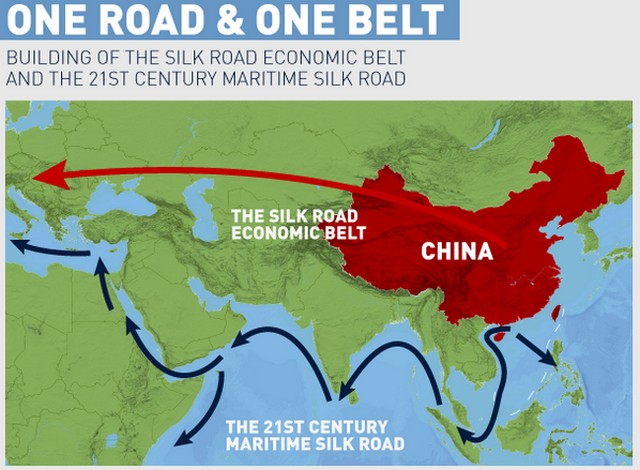VIENTIANE — Chinese Premier Li Keqiang on Wednesday called for concerted efforts between China and ASEAN (Association of Southeast Asian Nations) member states to push forward the Belt and Road initiative at the 19th China-ASEAN summit and the summit to commemorate the 25th anniversary of China-ASEAN dialogue relations.
China and Laos, one of the 10 member states of ASEAN, have already witnessed practical cooperation between the two sides, resulting in significant achievements in all fields.
China’s Belt and Road initiative has added fresh impetus to and broadened the prospect for their future cooperation, thus further improving the well-being of the Lao people and promoting the socio-economic development in the country.
CHINA’S BELT AND ROAD INITIATIVE HIGHLY COMPATIBLE WITH LAOS’ NATIONAL DEVELOPMENT STRATEGY
Laos, the only landlocked country in Southeast Asia, is seeking to be removed from a list of the least developed countries by 2020 and lay the foundation for industrialization and modernization.
Faster development of transport infrastructure including road, water, air and railway, which is now lagging behind, is the key for Laos to realize the targets.
The Lao government has unveiled a plan of transforming the country from a “landlocked country” to a “land-linked country.” The plan has since been upgraded to a national strategy designed to change geographical disadvantages into advantages.
The Belt and Road initiative refers to building a Silk Road Economic Belt and the 21st Century Maritime Silk Road. It aims at forging a trade and infrastructure network connecting Asia with Europe and Africa along the ancient trade routes.
Under the initiative, the China-initiated Asian Infrastructure Investment Bank (AIIB) was formally established in Beijing in 2015. The Silk Road Fund with China’s contribution of 40 billion U.S. dollars was announced in 2014, also in Beijing.
The two sources of funding are aimed at providing the much needed capital to fund energy, power, transport and telecommunication infrastructure projects for countries including Laos and regions along the route, thus playing an important role in promoting Laos’ socio-economic development.
ECONOMIC ZONES HELP LAOS OPEN UP TO OUTSIDE WORLD
China and Laos signed the Mohan-Boten Cross-border Economic Cooperation Zone Common General Plan in September last year, an important milestone in the economic and trade cooperation between the two countries.
The zone, focusing on agriculture, biological industries, processing, logistics and cultural-tourism, will help give full play to the complementary advantages of both economies, facilitate trade, investment and personnel exchanges, promote bilateral industrial cooperation, speed up the development of border areas and benefit the peoples of both countries.
The Saysettha Development Zone (SDZ) is another key project jointly developed by the two countries. The development zone, which covers an area of 10 square kilometers, will carry out comprehensive development using the pattern of “industrial park plus new city area.”
Industries in the zone include energy and chemical, agricultural products processing, machinery manufacturing, food processing, tobacco processing, building materials and engineering, warehouse and logistics.
The SDZ is expected to become a model of industrial zones in Laos, as well as a demonstration of Sino-Lao cooperation achievements.
While inspecting the zone early this year, Lao Prime Minister Thongloun Sisoulith said it will not only benefit local residents and promote socio-economic development of Vientiane, but also help facilitate the realization of Laos’ target to graduate from the Least Developed Country status by 2020.
CHINA-LAOS RAILWAY TO TURN LAOS FROM “LANDLOCKED” TO “LAND-LINKED”
The China-Laos railway is the first overseas route that will connect Laos with the vast railway system in China, using Chinese technology, equipment and investment.
The project has a total investment of 40 billion Chinese yuan (about 6 billion U.S. dollars), 70 percent of which comes from China, while 30 percent comes from Laos.
Speaking to the press after the laying of the cornerstone of the railway, Lattanamany Khounnyvong, Lao vice minister of Public Works and Transport, said the China-Laos railway project marks an important milestone in socio–economic cooperation strategy of the two countries.
Lattanamany, who is also China-Laos railway project working group task team leader, said the project is in line with Laos’ strategy to turn from a land-locked country to a land-linked one, and is compatible with China’s Belt and Road initiative.
LANCANG-MEKONG COOPERATION OFFERS NEW DEVELOPMENT OPPORTUNITIES FOR LAOS
The Lancang-Mekong Cooperation (LMC) mechanism, proposed by Chinese Premier Li Keqiang, is a subregional cooperation mechanism between China and the five Southeast Asian nations of Cambodia, Laos, Myanmar, Thailand and Vietnam.
The mechanism, initiated in accordance with the strong will of the six countries along the river for development and prosperity, is practical, effective and in line with people’s aspirations.
With the step-by-step implementation of the LMC mechanism, one-day rail travel along the Lancang-Mekong region will become reality as lines of the Pan-Asia Railway network are under construction.
The mechanism will not only facilitate the movement of people and goods between those countries, but also speed up the region’s development as a whole.
Meetings of senior officials, working teams and foreign ministers have been held to launch the dialogue and cooperation. Agreement has been reached on dozens of early-harvest projects covering water resource management, poverty alleviation, public health, infrastructure, personnel exchanges, science and technology.
The LMC mechanism has three pillars – political and security issues, economic and sustainable development, and social, cultural and people-to-people exchanges.
With consensus and strong will of the six countries, the LMC mechanism is showing tremendous potential and will benefit the peoples of the six countries including Laos.
Source: Xinhua



